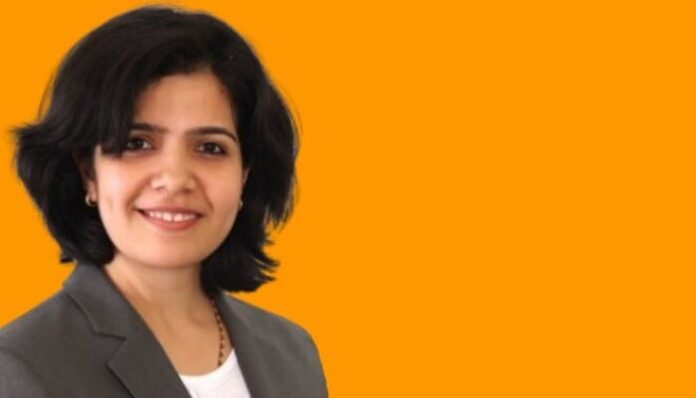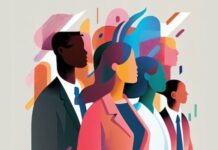
I recently had a conversation with a friend about how the topic of diversity and inclusion has rapidly evolved over time and taken on new forms. What began as a synonym for women’s empowerment has since transformed to encompass various types of diversity, including race, ethnicity, gender identity, sexual orientation, persons with disability, and neurodiversity, to name a few.
The most important aspect to aid diversity to thrive is an inclusive mindset, which organizations have begun to recognize and act on. Equity as a concept started with pay parity as the initial focus but has expanded to include equity in opportunities, work environment, and positioning. With remote teams and hybrid work becoming more prevalent due to the COVID-19 pandemic, a sense of belonging has become more critical than ever, as it is the key to culture, engagement, retention, and talent attraction.
Although the five generations currently working in corporate environments worldwide are still adjusting to this shift from Diversity to Diversity, Equity, Inclusion, and Belonging (DEIB), academia has taken the lead in creating DEI experts. Academic institutions in various countries offer degrees in Diversity and Inclusion to educate individuals on deeper subject knowledge.
During a conversation with my eight-year-old daughter, I inquired about her familiarity with the term “diversity.” She immediately spoke of ethnic diversity and related to the mix of her classmates from three different countries, ten different Indian states, and eight different languages. She called out how diverse we are as a country and how she celebrates her classmates’ cultures. Her response demonstrated that younger generations are already familiar with DEI concepts, and adults must continue to catch up.
Let’s consider some interesting facts:
- A Korn Ferry report predicts an 85 million global human talent shortage in 2030, which could result in $8.5 trillion in unrealized annual revenue.
- A World Economic Forum report states that skills have a half-life of about 5 years.
- The Stanford Center on Longevity predicts half of today’s 5-year-olds to live to 100, requiring a 60-year career, according to Forbes
- The Global Gender Gap Index 2022 by World Economic Forum ranks India 143rd in economic participation and opportunity and 107th in education attainment.
- India is set to become the world’s most populous country in 2023, with just a 19% female work participation rate in 2021.
- A NASSCOM Zinnov report found that 18% of Indian start-ups are led by at least one-woman founder/co-founder.
- Technology tools are being consciously used to enable diversity, equity, and inclusion (DEI), as noted in several reports.
These facts highlight the need to address the skill shortage issue, which is massive and requires diverse solutions. With technology as an enabler, it’s essential to focus on how different individuals in organizations and society can contribute to building a robust DEI bridge.
It’s important to consider the uniqueness of our culture and ecosystem. As a country, India has had varieties of diversity since time immemorial. Diversity has existed in languages, religions, traditions, values, festivals, and cuisines. Accepting and appreciating different viewpoints come naturally to Indians. So the evolving nature of this topic does raise a question as to what is changing for this land but also gives conviction and confidence that there is the proven ability to embrace any variety of diversity even as it gets morphed into a new shape.
Indian women face unique challenges and opportunities that are often overlooked in reports on gender and the workforce. Many women work in unorganized sectors, including caring for their families, without economic recognition. Additionally, millions of female solopreneurs, entrepreneurs, teachers, and performers of various arts are not considered in such reports.
Traditional Indian households have historically operated as a team with divided responsibilities between men and women. This has been changing as women’s intelligence and potential are recognized beyond the home. Women have long managed finances, relationships, emotions, inclusiveness, and personalization in large joint family setups, making them natural leaders in Indian society. Seeking to address the talent shortage and fostering diversity through technology and leadership starts with recognition of the existing strengths of women in our society.
Here are some actions that we could take immediately.
- Use technology to create job descriptions in neutral language to attract diverse candidates and use it as an enabler for all varieties of talents.
- Reskill women returning from breaks and create a pipeline for new opportunities.
- Adopt skill-based hiring and tap into the LGBTQIA community, Persons with Disabilities, and Veterans to train and deploy these untapped talent pools to the mainstream.
- Institutionalize inclusive mindset programs to reduce bias in decision-making.
- Start skilling initiatives from school and in rural areas to create employable talent
- Introduce part-time opportunities for elderly people to utilize their talent and wisdom
- Teach inclusive language and behaviors to children and young people at home
- Create DEIB policies in schools and colleges as well so conscious practice begins early on
- Make DEIB a household topic and engage in conversations at home with all generations. As personalization is gaining more and more prominence, maybe we need to learn to celebrate the uniqueness of everyone and therefore DEIB can take a new avatar of DEIBU (U for Uniqueness).
In 2030, I envision witnessing teams with members that include parents of pets, robots, and humans, working as gigsters, part-timers, and full-timers across six generations, discussing how they can choose from a bouquet of benefits and programs that are personalized to them.
Implementing some of these can ensure progress in creating a diverse and inclusive future, where everyone’s uniqueness is celebrated while also building a strong bridge for the Future of Work.
References: Korn Ferry, Forbes, IBM, World Economic Forum








